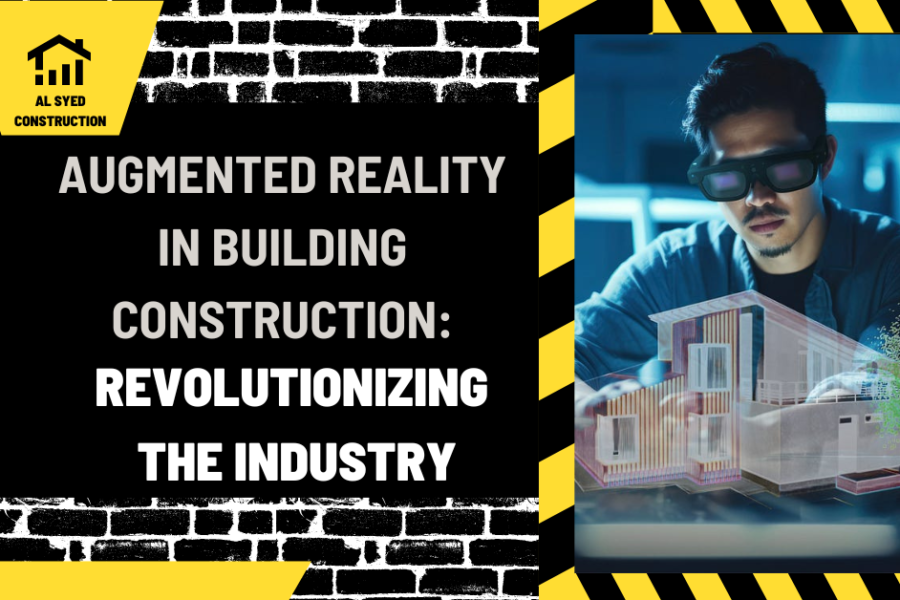Augmented Reality in Building Construction: Revolutionizing the Industry
Augmented reality (AR) has emerged as a groundbreaking technology in the construction industry, transforming the way buildings are designed, planned, and constructed. This innovative tool has revolutionized traditional construction methods, offering a wide array of benefits that enhance efficiency, accuracy, and cost-effectiveness. In this article, we explore the incredible impact of AR on building construction and how it is reshaping the future of the industry.
Table of Contents
Understanding Augmented Reality
Augmented reality is a technology that overlays digital information such as images, videos, or 3D models onto the real world. Unlike virtual reality, which creates a completely immersive digital environment, AR enhances the existing environment by adding virtual elements. This technology is typically experienced through a smartphone, tablet, or AR headset, providing users with a seamless blend of the physical and digital worlds.
The Role of AR in Building Construction
AR has emerged as a powerful tool in the field of building construction, offering a wide range of benefits that streamline the construction process and improve overall project outcomes. One of the key advantages of AR is its ability to provide real-time, interactive 3D models of building designs. This allows architects, engineers, and construction teams to visualize the final product in a realistic manner, enabling them to identify potential issues and make necessary modifications before construction begins.
Advantages of AR in Building Construction
1. Enhanced Visualization
AR allows construction professionals to visualize building designs in a realistic 3D environment, providing a clear understanding of the project scope and design intent. This enhanced visualization helps in identifying potential design flaws and making necessary adjustments early in the process, saving both time and money.
2. Improved Communication and Collaboration
AR facilitates better communication and collaboration among project stakeholders, including architects, engineers, contractors, and clients. By providing a common platform for viewing and discussing design concepts, AR helps in fostering a collaborative working environment, leading to more efficient project delivery.
3. Increased Efficiency and Accuracy
AR helps in increasing the efficiency and accuracy of construction projects by providing real-time information and feedback. Construction teams can use AR to visualize building components, access construction plans, and monitor progress, ensuring that the project stays on track and within budget.
4. Enhanced Safety
AR enhances safety on construction sites by providing real-time information about potential hazards and safety protocols. Workers can use AR to access safety guidelines, identify potential risks, and take necessary precautions, reducing the likelihood of accidents and injuries.
Case Studies: Successful Implementation of AR in Construction
1. Trimble’s SiteVision
Trimble’s SiteVision is an AR solution that allows construction professionals to visualize building designs in real-world environments. The tool has been used in various construction projects to enhance design visualization, improve communication, and streamline project workflows.
2. DAQRI’s Smart Helmet
DAQRI’s Smart Helmet is a wearable AR device that provides construction workers with real-time information and instructions. The helmet has been used to enhance safety, improve productivity, and reduce errors on construction sites.
Future Outlook: The Continued Evolution of AR in Construction
AR is poised to revolutionize the building construction industry in the coming years, with advancements in technology driving its adoption and integration into construction workflows. As AR becomes more accessible and affordable, we can expect to see its widespread use in various construction projects, leading to greater efficiency, accuracy, and innovation in the industry.
In conclusion, augmented reality is transforming the building construction industry, offering a wide range of benefits that enhance efficiency, accuracy, and safety. By leveraging AR technology, construction professionals can visualize designs, improve communication, and streamline project workflows, ultimately leading to better project outcomes. As AR continues to evolve, its impact on the construction industry is expected to grow, ushering in a new era of innovation and advancement.




